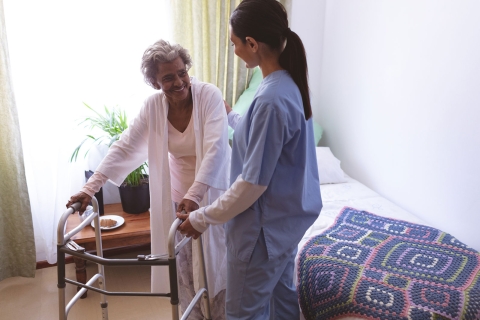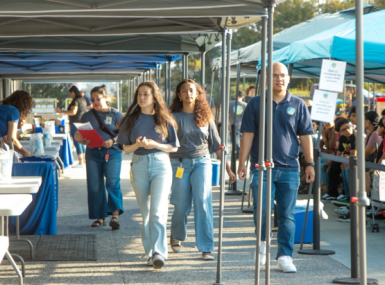Congress introduces bipartisan legislation to reauthorize the Older Americans Act
Author

Blaire Bryant
Upcoming Events
Related News

Key Takeaways
On January 28, the leaders of the U.S. Senate Special Committee on Aging and U.S. House of Representatives Committee on Education and Labor introduced bipartisan legislation to reauthorize the Older Americans Act (OAA), which supports activities that help older adults live independently and remain part of the community. The measure, the Supporting Older Americans Act (SOAA; H.R. 4334), represents a victory for county governments as we seek to strengthen and expand our networks of support for the aging population.
Update: On March 25, President Trump signed H.R. 4334, the Supporting Older Americans Act, extending OAA through 2024. The bill was amended and passed by the Senate on March 3, and passed the House on March 11. The legislation comes at a vital time as it strengthens the aging network's ability to respond to public health emergencies and emerging health threats, like the COVID-19 pandemic.
Counties are key partners with the federal government in providing care and support to the nation’s increasing population of older adults, and we administer and finance many programs under the OAA. These vary based on local needs but often include transportation, nutrition, support for caregivers, recreation, in-home assistance, disease prevention and more. Area Agencies on Aging (AAAs), the local entities tasked with administering and operating OAA-funded programs, are frequently housed within county governments or regional government structures that include county leaders. Fifty-six percent of AAAs rely on local funding streams through counties or other local governments to provide additional programs and services.
By 2035, for the first time in our nation’s history, the population of adults 65 and older will outnumber children younger than 18. As the population rapidly ages, counties are facing increasing demand and challenges in providing comprehensive systems of care to this population. Federal funding for the OAA has not increased since 2010, creating long waiting lists for services. The SOAA seeks to address this problem by providing annual funding increases for core OAA services for through FY 2024 by implementing a 7 percent increase in FY 2020 and 6 percent increases annually thereafter.
Along with these increases, the SOAA establishes a new Center for Research, Demonstration and Evaluation Center for the Aging Network within the Administration on Aging, requires additional research into the impact of social isolation on senior health and affirms the importance of local control and flexibility around the administration of OAA programs.
You can view NACo’s letter to Congress highlighting county support and urging Congress to quickly pass the bill.

Attachments
Related News

National Association of Counties expands programming to build childcare supply
NACo announces the launch of its Childcare Supply Network. This new peer learning network will support local leaders in addressing childcare challenges and co-creating sustainable solutions to strengthen local childcare systems in response to workforce needs.

California county program helps spark student careers
San Diego County created a win-win program to fill open staff vacancies and give college students real-world work experience.

California county, non-profit help launch child-care startups
Adrianna Segura, a Stanislaus County, Calif. mother of two, was licensed to be a home-based child-care provider, but she didn’t know the first thing about starting a business. She knew how to take care of children, but she wasn’t sure how to file taxes, create contracts or what her rate should be.
